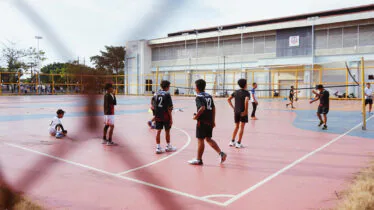The Pressure is Cooking Us All
Most teachers get time each day when they are not with students in order to prepare—“prep period”–grading papers, responding to emails, researching for coming lessons, using the copy machine, developing PowerPoint slides, writing reports and evaluations for students with IEPs, using the bathroom, calling parents, consulting with the school nurse about a student’s medication, conferring with school counselors, going to the supply closet to restock pencils and pens, checking in with a peer, updating bulletin boards…all of these are the normal day-to-day tasks of teachers. These tasks can never be completed in the scheduled prep time.
So teachers in extraordinary numbers volunteer up to 25% of their own time beyond the contracted hours in order to work to a standard they hold for themselves; without their unpaid effort, the job becomes unmanageable, and dispiriting. For those of you doing the math, all those additional hours teachers work early in the morning, at home in the evenings, on weekends, and during vacations, reduce their actual time off from the job to about three or four weeks a year.
But at least they get prep periods built into contracts, agreements, and schedules!! Not so for administrators. New school leaders are often shocked by the endless deluge of responsibilities, unbound from the cozy confines of a classroom. Administrators have more say than teachers as to how they spend their time—but other than contracted vacation days, there are no limits to the time they devote to their jobs.
In my coaching and consulting to school leaders, I consistently urge them to put into their schedule at least three 15 minute breaks during a week…to do anything, or to do nothing. I am met with resistance to this minimal suggestion—just three 15 minute breaks a week are practically blasphemous. Their resistance comes from many concerns: there is simply too much to do and every spare moment has to be dedicated to reducing their work load (“Jeffrey, in those fifteen minutes there will be five more emails in my inbox that I’ll have to respond to”); they are being paid more than their former teaching peers, and to justify that salary increase, they must work even longer and harder; the critical need to upend the historic inequities of society impacting student performance requires ceaseless effort; there is an unexamined and toxic view of leadership as inexhaustibly heroic, selfless, and absolutely essential; they’ve never been advised or supported by their bosses to slow down.
Here’s a part of my story: when I was a principal, I would put a “Do Not Disturb” sign on my door, tell the school secretary to call me only if the building was on fire, and take a nap. Yes, once or twice a week I napped for 15 minutes!! Blasphemous!! But I knew that the school would be better off if the principal emerged from the office refreshed and ready to fully focus on whatever came next. I couldn’t complete everything on my To Do list no matter how relentlessly I labored; after a nap, I was more fully attentive to the next member of the school community who needed my services, or the next report that required a close examination. Days I didn’t nap I put on music and had a cup of tea, pondered long term plans for the school, or visited an art class—one of the remaining sanctuaries free from the bonds of our omnipresent testing culture.
School systems are designed to churn at this inhumane pace to meet our ambitious goals, with daily expectations that can never be fully met. School budgets have never been robust enough to leave no child behind. The system literally depends on the workers to extend themselves beyond their contracts in order to be prepared. Sadly, we have come to accept that this is how schools are meant to be.
At the bottom of the hierarchy we find our students. They are unprotected from the adult anxiety descending through the system. The limited budgets, required courses, standardized testing, and unrelenting “time on instruction,” with admonitions that teachers should teach bell to bell, surrounds students like smog shrouding an over-industrialized city. And too commonly, the evaluation of every teacher and administrator will be standardized test scores. Teachers know they should give students time to slow down, in conflict with their own job security depending on their students’ performance on those tests. The students breathe in the adult stress all day.
From our youngest student to our most veteran faculty member and administrator, our wonderful human minds need time to ponder, to create meaning, and to replenish our capacity for attention. We need time to experiment, to share, and time to summarize and synthesize. This is the neuroscience of learning, a physiological demand that is not given its time and space in institutions supposedly dedicated to learning. We have to remember that all of the adults and all of the students are complex evolving human beings. They are not our problem to fix, but the people we serve.
Here are three interventions that can support us through these hard times:
- Start every day and every lesson and every faculty meeting with an opening ritual. Support teachers in greeting every child who walks into the classroom. Administrators, walk the halls and say hello to the staff. Everyone needs to take a moment to make eye contact with the other human beings. Let’s appreciate each other for showing up.
- End every lesson or day with a closing ritual. Absolutely reject the perverse notion, fully debunked by neuroscience, of teaching bell to bell; you can talk bell to bell, but that ain’t teaching. Instead, use 2-3 minutes to summarize, to appreciate efforts, to share ideas, to collectively be responsible for calmly transitioning to the next task.
- Glide into vacation. In those last few days before a break, don’t try to cram in new material; it doesn’t work. Give students an opportunity to review, to fill in gaps, to experience mastery, to explore beyond the standardized lesson. None of that has to be graded. Cancel all non-critical meetings, so everyone can catch up on their emails and reports. Remind each other to slow down in the hallways and stairwells. We don’t need to burn out in order to justify the days off.
You may notice that those three ideas are structural interventions, versus strictly self-care actions. Self-care is critically important; each of us should develop rituals, boundaries, and habits of self-care. But here I am looking to the adults who have authority to use that authority. District and building level administrators, list all the management interventions you can implement to de-stress your system. The pressure is cooking your community right now!
Teachers, you can implement on your own all three of those changes above until you are told not to. I must add that every teacher I know who has added a closing ritual to their daily routines reports that they are less stressed, and better able to look forward to the next lesson.
Don’t look to the next person to make changes—we need to be peaceful warriors now for ourselves, for each other, and for those we serve, especially the students.



